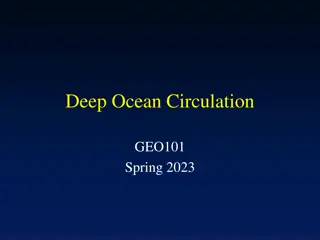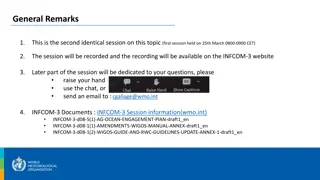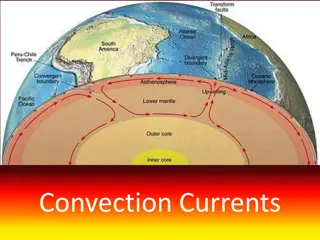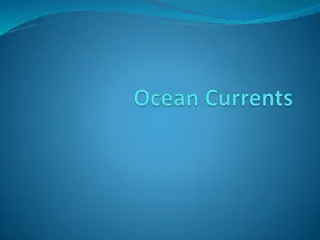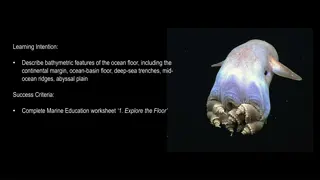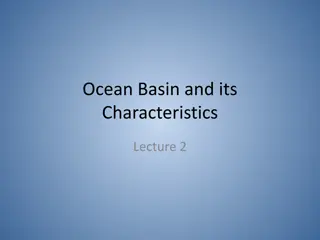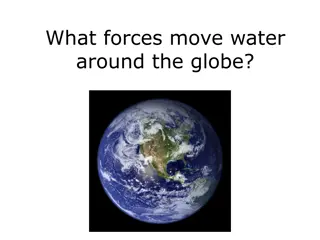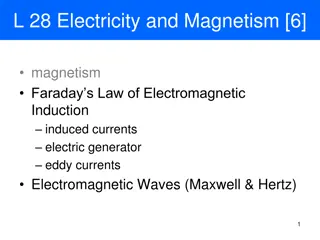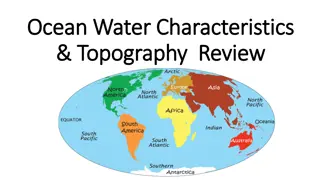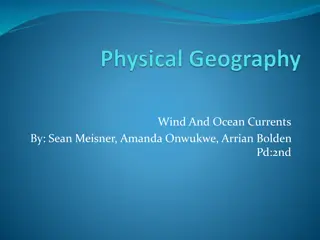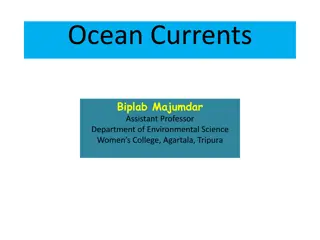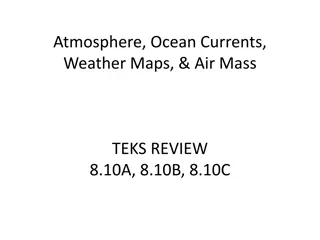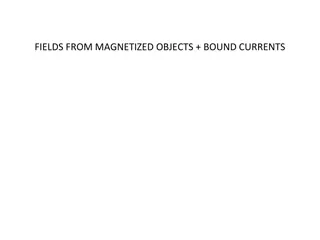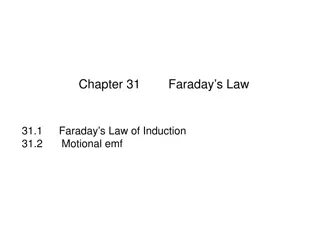Understanding Ocean Currents: Causes and Effects
Explore the fascinating world of ocean currents and how factors like temperature, wind, Earth's rotation, and gravity influence their movement. Learn about the impact of ocean water properties on currents, the distribution of surface temperatures, and the role of various forces like solar heating, winds, and gravity. Dive into the reality of sending a message in a bottle and discover the interconnected dynamics of our oceans.
Download Presentation

Please find below an Image/Link to download the presentation.
The content on the website is provided AS IS for your information and personal use only. It may not be sold, licensed, or shared on other websites without obtaining consent from the author. Download presentation by click this link. If you encounter any issues during the download, it is possible that the publisher has removed the file from their server.
E N D
Presentation Transcript
Ocean Currents The Reality of Sending a Message in a Bottle
Ocean Current Layers Surface Currents top 10% of the ocean; upper 400 m Deep Currents lower 90% of the ocean
Properties of Ocean Water How they impact ocean currents Temperature remember heat rises! Salinity remember salty water sinks! Density a function of temperature and salinity
Surfers (Why) Florida California
Ocean Surface Temperatures http://www.bigelow.org/shipmates/sstemp_lg.gif
Temperature vs. Currents http://earth.usc.edu/~stott/Catalina/Oceans.html
Notes Water by the equator is the hottest. Water by the Poles is the coolest. Ocean currents are caused by Uneven Heating. Ocean Currents are Convection Currents.
CAUSES OF CURRENTS 1. shape of the continents 2. temperature differences (colder water is denser) 3. spinning of the Earth (deflecting currents to right in Northern hemisphere) 4. winds
1 2 Currents are affected by: 1 continents 2 temperature 3 Coriolis spin 4 Gulf Stream 4 3 Credits: CNMOC, U. S. Navy; CNMOC, U. S. Navy; NASA; U. S. Geological Survey
Current Forces Explained Sun/solar heating - causes water to expand and move Winds - push the water; winds blowing for 10 hrs across ocean will cause the surface water to flow @ ~2% wind speed; wind has the greatest effect on surface currents Gravity - pull water downhill or pile against the pressure gradient (high/low); influences tides
Winds Winds driven by uneven solar heating & Earth s spin, drive the movement of the ocean s surface currents. The prime movers are the powerful westerlies and the persistent trade winds (easterlies).
Wind Driven Ocean Currents http://www.bigelow.org/shipmates/hc_currents_lg.gif
Current Forces (contd) Coriolis effect/force - Force due to the Earth's rotation, capable of generating currents. It causes moving bodies to be deflected to the right in the Northern Hemisphere and to the left in the Southern Hemisphere. The "force" is proportional to the speed and latitude of the moving object. It is zero at the equator and maximum at the poles http://www.csc.noaa.gov/text/glossary.html causes the water to move around the mound of water
Surface Currents Surface current with surface currents circulation is less dense and influenced by winds 1. Warm surface currents: wind and Earth s rotation 2. Cold surface currents: flow towards the equator 3. Upwelling current: cold, nutrient rich; result of wind 4. Western Boundary currents: warm & fast 5. Eastern Boundary currents: broad, slow, cool & shallow, associated with upwelling Ex: Gulf Stream = surface current that is the upper 20% of the ocean, western boundary current
Properties of Deep Ocean Currents Deep ocean water characteristics: Cold Dense Salty Move by density forces and gravity Move slower than layers above Thermohaline Circulation: is global ocean circulation. It is driven by differences in the density of the sea water which is controlled by temperature (thermal) and salinity (haline). http://www.climate.unibe.ch/~christof/div/fact4thc.html
Global Conveyer Belt Thermohaline circulation links the Earth's oceans. Cold, dense, salty water from the North Atlantic sinks into the deep and drives the circulation like a giant plunger. http://www.columbia.edu/cu/record/23/11/13.html Graphic - http://www.grida.no/climate/vital/32.htm
Ocean Currents & Living Things Currents are important to marine life as they help move food and nutrients making them available for photosynthesis, metabolic requirements and or consumption.



